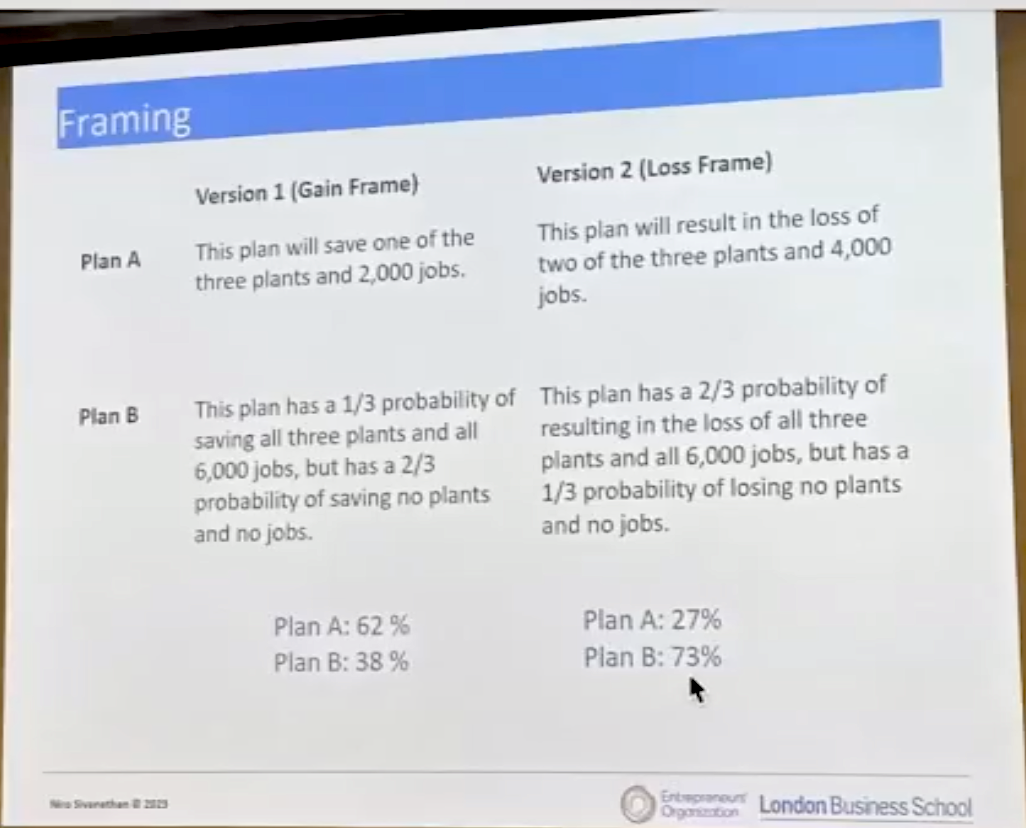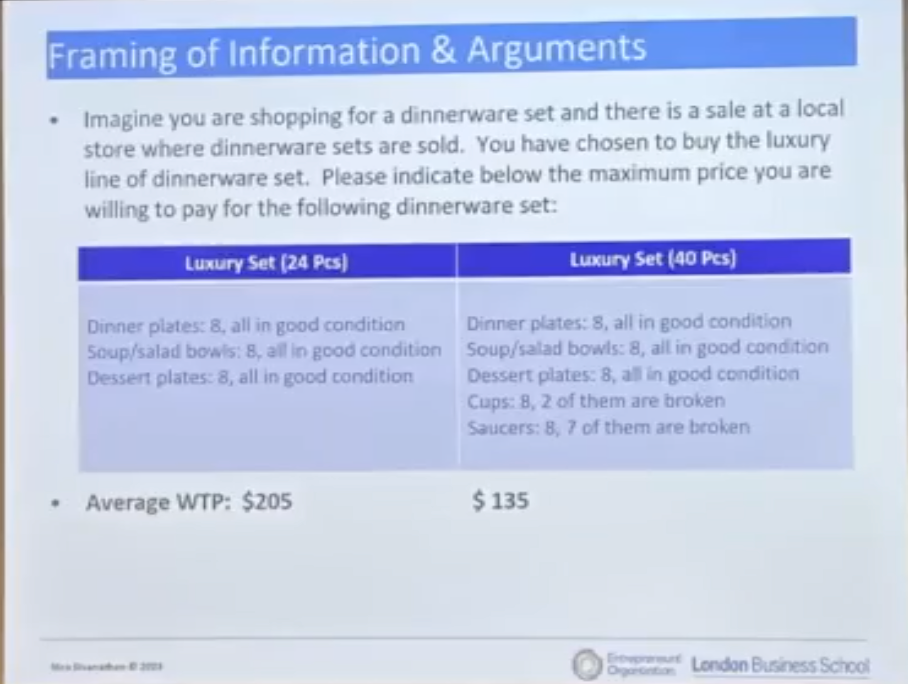In the world of digital marketing, we are always in pursuit of strategies to increase conversion rates and boost website conversions.
Many tactics and strategies have been put to the test, but one often-overlooked element is the art of framing your messaging.
This powerful tool, when implemented correctly, can 10X your conversions. Let’s delve deeper into how framing your message can lead to conversion rate optimization.
The Magic of Framing
Not all of us realize that the way we frame our message can significantly improve conversion rates. “Influence hacks” can create impactful shifts in the way consumers perceive and react to our marketing efforts.
This is known as gain framing and loss framing.
During a recent discussion between Eric Siu and Neil Patel, they explored a fascinating experiment around gain framing and loss framing.
Eric recently finished his entrepreneur’s master’s program from MIT and in one of his classes, they discussed this concept. Prior to the class, the professor – who is a professor at the London School of Business and does a lot of M&A deals – sent a survey to all the students.
Here’s a brief summary of the “game” (based on the class survey) Eric and Neil played to illustrate the impact of framing.
Related Content: SEO & CRO: How Rankings and Conversions Complement Each Other
The Power Plant Scenario
Eric presented two options to Neil, both aimed at saving jobs at power plants:
- Plan A: Guarantees the preservation of one out of three power plants, which saves 2,000 jobs.
- Plan B: On the other hand, offers a one-third chance of saving all three plants and all 6,000 jobs, but a two-thirds chance of saving none.
Neil chose plan A, emphasizing the importance of guaranteed results over potential outcomes.
The results of this study, when framed as a gain, were:
- 62% of participants chose Plan A
- 38% of participants chose Plan B
The Loss Framing Variant
Eric then presented the same scenario, but framed it differently. This time:
- Option A results in a loss of two of the three plants and 4,000 jobs.
- Option B has a two-thirds probability of losing all three plants and all jobs, but a one-third probability of no losses.
Neil chose plan A, once again favoring guaranteed results.
Interestingly, though, when framed as a loss, this time:
- 27% of participants chose plan A
- 73% of participants chose plan B

This demonstrates how people react differently based on the framing of the scenario, even though the outcomes are the same.
To restate the outcomes here:
- 62% of people pick plan A when it’s framed as a gain.
- But when it’s framed as a loss, 73% of people pick plan B.
It’s the same thing, it’s just how these questions are framed.
So, what does this mean for marketers? Simply put, the power of framing is a high conversion rate tactic that can’t be ignored. How we present our message — be it in a positive or negative light — can greatly affect our audience’s responses.
How you frame your product or service is really important with your marketing. Your messaging matters at the end of the day. And you might think you have a lot more control than you do as a consumer, but you don’t because this kind of psychological messaging is happening to you all the time.
Related Content:
* Make Your Product Sing: The Importance of UX Writing
* How to Design the UX of a Website or App to Increase Conversions
The Importance of Messaging in Conversion Optimization Strategies
The lesson here is clear: Your messaging matters. When it comes to e-commerce conversion optimization, it’s not just about what you’re saying, but how you’re saying it. Framing your message to highlight gains or downplay losses can significantly influence your audience’s decision-making process.
But there’s more to it than just the power of framing. There’s also the strength and clarity of your argument to consider.
Your Argument Is Only as Strong as Your Weakest Link
Take a look at another example shared by Eric.
Let’s say you’re shopping for a dinnerware set and you see that there’s a sale at your local store.
You can choose between buying these two sets of dinnerware:
- Set A: This set comprises 24 pieces, all in perfect condition.
- Set B: This set offers 40 pieces, with the same 24 in perfect condition, plus eight cups (two broken) and eight saucers (seven broken).
Now you’re asked what is the price you’re willing to pay for each of the two dinner sets.
Neil said he would pay $100 for the 24-piece dinnerware set, and just $110 for the 40-piece set. His reasoning is that the 24 dinnerware set is all in good condition, whereas the 40-piece set had many broken pieces in it. Ideally, he would try to convince the seller to give him a discount on the second set.
But not everyone’s a Neil Patel negotiator. In the study, the average max price people would be willing to pay for:
- Set A: With 24 pieces, all in perfect condition = $205
- Set B: With 40 pieces, but with nine of them broken = $135

The point here? Adding weak arguments (broken items) to your overall proposition can dilute the strength of your stronger arguments. In other words, when making an argument, the strength of that argument is only as strong as your weakest link.
So, when building your landing page conversion rate strategy…
Remember that quality of arguments trumps the quantity of arguments.
Your messaging should focus on the key, strong pieces of evidence, leaving out any weaker points that might dilute your message.
Because anytime you’re talking about negative things, people give massive discounts. So, in essence, what you want to do is just talk about the positive things. And if there are items like broken plates or cups, instead try framing it like: “You’re also getting these extra six cups for free.” You still charge for the 24 pieces that are in pristine condition. You just throw in the other stuff for free.
Related Content:
* How Remarketing Can Help Increase Conversions
* 8 Facebook Ad Copywriting Tricks to Maximize Conversions
Conclusion: Harnessing Influence Hacks to Improve Conversion Rates
Whether you’re developing a product description, creating a PPC ad or formulating a social media campaign, remember to frame your messaging effectively. Keep your arguments strong, clear and focused on the key benefits your product or service provides. Don’t let weaker points dilute your message.
Implement these influence hacks in your conversion optimization strategies and experience a boost in your conversion rates. After all, in the digital marketing sphere, small tweaks can often lead to massive gains.
If you want to increase your conversions, Single Grain’s CRO experts can help. (We’ve helped Amazon and Uber, and we can help you, too!) 👇



